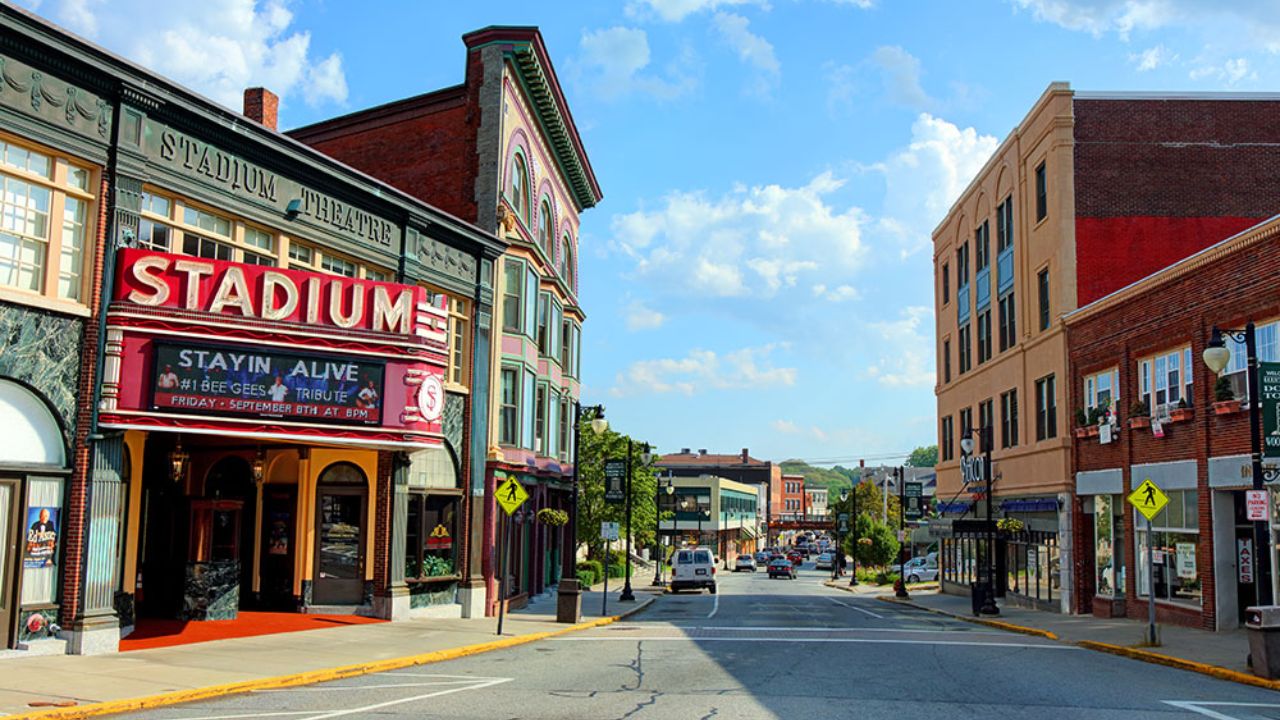Rhode Island, a picturesque New England state celebrated for its scenic coastline, historical landmarks, and vibrant culture, boasts its own unique tapestry of safety and livability. However, not all corners of the Ocean State offer the same tranquility. According to the latest FBI crime statistics, one city stands out as the most challenging place to reside in Rhode Island: Woonsocket.
What Makes Woonsocket So Dangerous?
Woonsocket is located in the northern reaches of Rhode Island, near the Massachusetts border, and is home to around 43,000 residents. This city has a deep-rooted industrial history, but the decline of manufacturing in the region has brought about economic and social hurdles, including elevated unemployment, poverty, and crime.
The FBI’s 2023 crime data highlights that Woonsocket saw 231 violent crimes and 751 property crimes over the course of a year. This translates to a violent crime rate of 536 per 100,000 residents and a property crime rate of 1,743 per 100,000 residents.
These figures significantly surpass the state averages of 237 and 1,174, respectively. In fact, Woonsocket not only exhibits the highest violent crime rate but also ranks second in terms of property crime rate among all Rhode Island cities.
Common forms of violent crimes in Woonsocket include aggravated assault, robbery, rape, and murder, while prevalent property crimes encompass burglary, larceny-theft, and motor vehicle theft. Moreover, the crime density statistic for Woonsocket, at 181 per square mile, is over four times the state average of 32.
This implies that residents of Woonsocket face a significantly higher risk of falling victim to criminal activities compared to their counterparts in other parts of Rhode Island.
What Are the Causes and Consequences of Crime in Woonsocket?
Various factors contribute to the elevated crime rate in Woonsocket, with socioeconomic conditions, educational attainment, drug abuse, gang involvement, and law enforcement resources all playing interconnected roles in creating a challenging cycle of violence and despair.
For instance, Woonsocket’s median household income stands at $41,642, lower than the state median of $67,167. Roughly 20% of the population lives below the poverty line. Economic struggles like these can lead to stress, frustration, and a sense of hopelessness among residents, factors that may fuel criminal behavior or make individuals more susceptible to criminal exploitation.
Educational attainment in Woonsocket is notably lower, with just 77% of adults holding a high school diploma or higher, and a mere 16% having a bachelor’s degree or higher. These figures are beneath the state averages of 88% and 34%, respectively. A lack of education can restrict opportunities and prospects, as well as impact cognitive and social skills. Studies have established a correlation between lower education levels and increased crime rates.
Crime in Woonsocket imposes a multitude of adverse effects on the well-being and quality of life for its residents. It inflicts physical and psychological harm on victims and witnesses, causes damage to property and infrastructure, diminishes trust and community cohesion, and deters visitors and investors. The strain on public services, including law enforcement, courts, prisons, healthcare, and social welfare, only compounds the problem.
What Can Be Done to Improve Safety in Woonsocket?
There are no quick fixes for reducing crime in Woonsocket. The path to a safer community demands a comprehensive, collaborative approach involving numerous stakeholders and sectors. Several strategies that could contribute to improved safety in Woonsocket include:
- Promoting economic development and job creation to provide greater opportunities and income for residents.
- Enhancing education and training programs to bolster the skills and qualifications of residents.
- Offering support and assistance to low-income families and individuals to help them meet basic needs and surmount challenges.
- Expanding drug prevention and treatment programs to combat substance abuse and addiction.
- Strengthening community engagement and empowerment to nurture social cohesion and civic participation.
- Increasing police presence and visibility to deter criminals and reassure residents.
- Implementing evidence-based policing practices and policies to enhance law enforcement’s effectiveness and accountability.
- Advocating for restorative justice and rehabilitation programs to aid offenders in reintegration into society and reduce recidivism.
In Conclusion
Woonsocket, a city in Rhode Island, has garnered the unfortunate distinction of being labeled the most dangerous place to live in the state according to the latest FBI crime data. The city grapples with high rates of both violent and property crimes that far exceed state averages.
The origins and repercussions of crime in Woonsocket are multifaceted, involving a complex interplay of economic, social, educational, and environmental factors.
To enhance safety in Woonsocket, a comprehensive, cooperative strategy is essential, addressing both the root causes and the effects of crime, while also strengthening protection and prevention measures. By taking these steps, Woonsocket can work toward becoming a safer, more prosperous city for both its residents and visitors.
